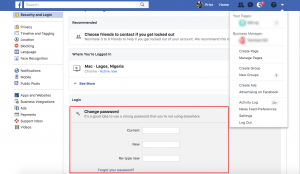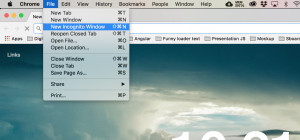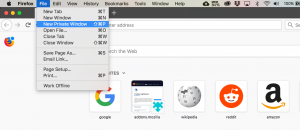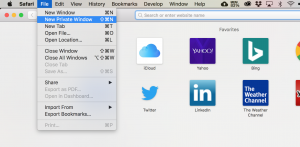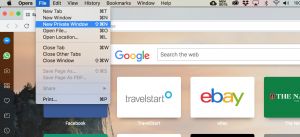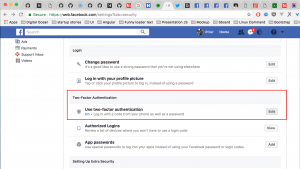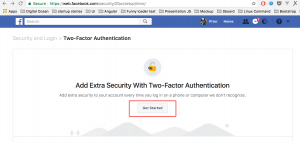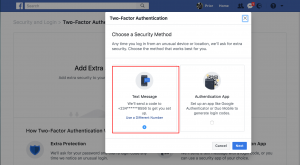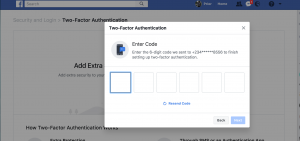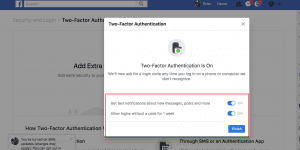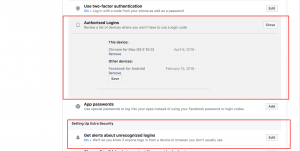With over 2 billion users, Facebook is arguably the most popular social network and had become a place full of cyber-criminals who want to gain access to your profile to perpetuate their evil intentions or spam your friends through your accounts. It is no fun logging onto Facebook and realizing that your account has been hacked. But it happens, and sometimes the damage done can mean a big deal to you or your loved ones.
With the names of Social Media apps like Facebook in the headlines and questions about online security and data breaches, many of us users make perfect targets for identity theft and scams. Learn how you can stay safe on Social Media with these 10 tips. https://t.co/AwGjzjfx5X
— First National Bank (@FNBCedarValley) April 20, 2018
In this article, we will go through some important steps you can take to keep others, including your angry ex from getting into your Facebook account.
Recommended Reading: 5 Simple Tips to Being Safe Online
Here are 5 tips to help you secure your Facebook account.
1. Create a Complex Password
Having a complex password on an online platform is the first most important step to staying secure. Chances are that you have already created your Facebook password. However, it is important to make sure your Facebook password follows the following four(4) rules;
Make it impersonal – do not include easy-to-guess personal information such as names, birthdate e.g Famous0404.
Make it diverse – mix upper, lower letters, numbers, and symbols e.g P@55w!$%SF.
Make it long – it should be at least 8 characters long.
Make it unique – use unique password across different online platforms.
Now that will know how a strong password should be like, let’s change our password now, shall we?
To change your password, go to Settings > Security and Login > Change Password
2. Always go incognito on a shared computer/device
If you are the type that accesses your Facebook account using a shared/friends computer or office computer, always use incognito/private browsing mode. Using incognito mode, your browsing sessions/activity will not be logged into the browsing history. Even if you forgot to log out, closing the open tabs will log you out automatically.
Chrome
If you use Chrome browser, activate the incognito window from the menu File > New Incognito Window.
You can also activate the incognito mode by using the following shortcut CMD + Shift + N on Mac or Ctrl + Shift + N on Windows.
Firefox
If you use Mozilla Firefox browser, activate the private window from the menu with File > New Private Window.
You can also activate the incognito mode by using the following shortcut CMD + Shift + P on Mac or Ctrl + Shift + P on Windows.
Safari
For Safari, activate the private window from the menu with File > New Private Window.
You can also activate the incognito mode by using the following shortcut CMD + Shift + N on Mac or Ctrl + Shift + N on Windows.
Opera
For Opera, activate the private window from the menu with File > New Private Window.
You can also activate the incognito mode by using the following shortcut CMD + Shift + N on Mac or Ctrl + Shift + N on Windows.
3. Activate 2-Factor Authentication
2-factor authentication (also known as 2FA) is a method of confirming a user’s claimed identity by utilizing something they know (password) and a second factor other than something they have or something they are. An example of a second step is the user repeating back something that was sent to them through an out-of-band mechanism. On the other hand, the second step might be a 6 digit number sent through SMS or generated by an app that is common to the user and the authentication system.
2-factor authentication helps protect your account from hackers even if for some unknown reasons your login details gets in their hands. It is just one piece of the puzzle(something they know); they will surely need the other piece of the puzzle (something they don’t have or are – the code).
Find below how to set up 2-factor authentication on Facebook.
Go to Settings > Security and Login > Two-Factor-Authentication > click on the Edit button
On the next page, click on Get Started
Then you will be asked to select a security method. Select Text Message and click Next. If you have not added your mobile number, you will be asked to add it.
Facebook will send a 6 digit code to your mobile number. Enter it, as shown in the next screenshot.
By now 2-Factor Authentication is already turned-on. The next page is just preference page, toggle all the buttons and click on Finish.
4. Always review active sessions
Facebook has a feature that enables you to review you active sessions i.e devices and computers you are currently logged in. For your security, it is important to always review these sessions and remove devices that you do not recognize or devices you no longer want to be active on. This feature is also useful especially when you lost your phone, it will enable you to remotely log out your stolen device.
Go to Settings > Security and Login > Authorized Logins
To remove any device, click on remove and then the save button.
There is an option at the button of the page to turn on unrecognized login alert. This alerts you to any first time logins from devices.
5. Avoid Spam Links
Spam involves contacting people with unwanted content or requests. This includes sending bulk messages, excessively posting links or images to people’s timelines and sending friend requests to people you don’t know personally.
Recommended Reading: Mobile Malware Attacks: The Cyber Threat More Menacing Than Ransomware
Spam is sometimes spread by clicking on bad links or installing malicious software. On other occasions, scammers gain access to people’s Facebook accounts, which are then used to send out spam.
The following are ways to avoid spam;
- Don’t accept friend requests from people you don’t know
- Never click suspicious links, even if they appear to come from a friend or a company you know
- Don’t put your Facebook credentials on a page that shows a Facebook login page after clicking a link. That is usually a sign of phishing.
If you come across spam on Facebook always report it. Follow this link to find out how to report spam on Facebook.
Conclusion
Now with these tips, you can browse Facebook without worrying about your account getting compromised.
Have I missed any other important security tip to keep you safe on Facebook or have you been a victim of Facebook hacking? Please do share your experience in the comment section.





